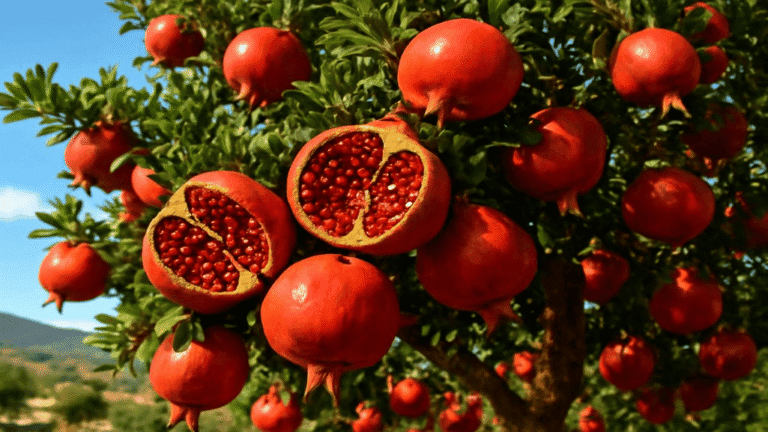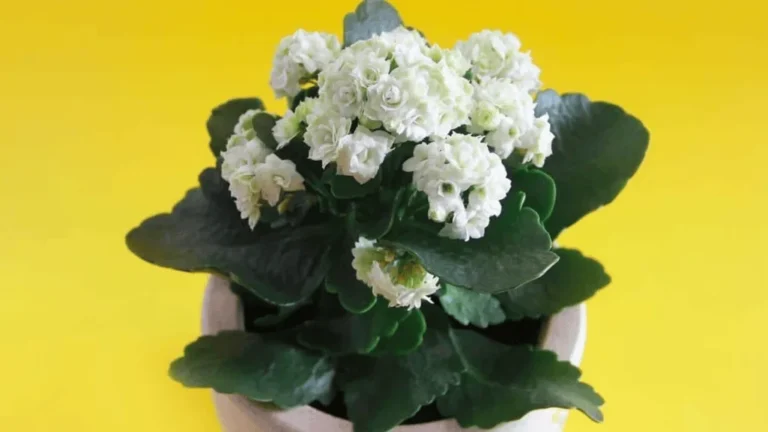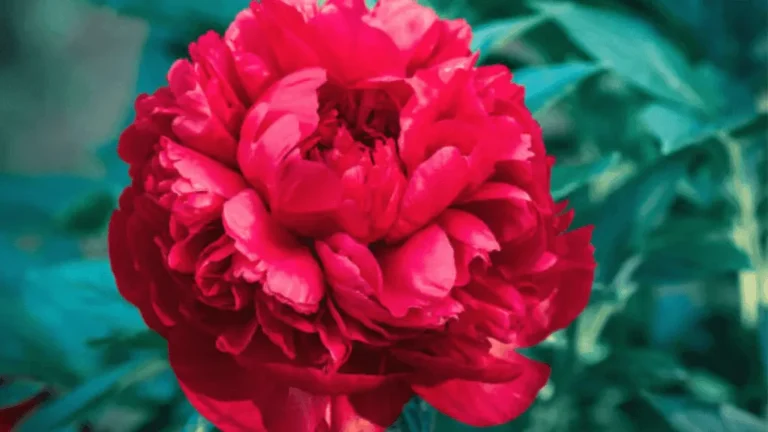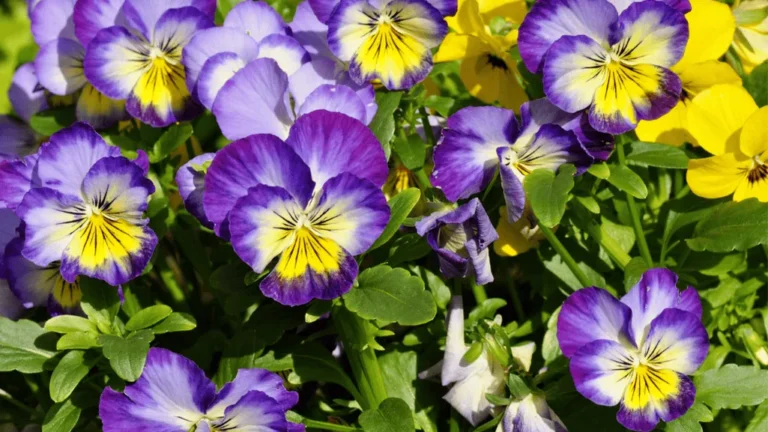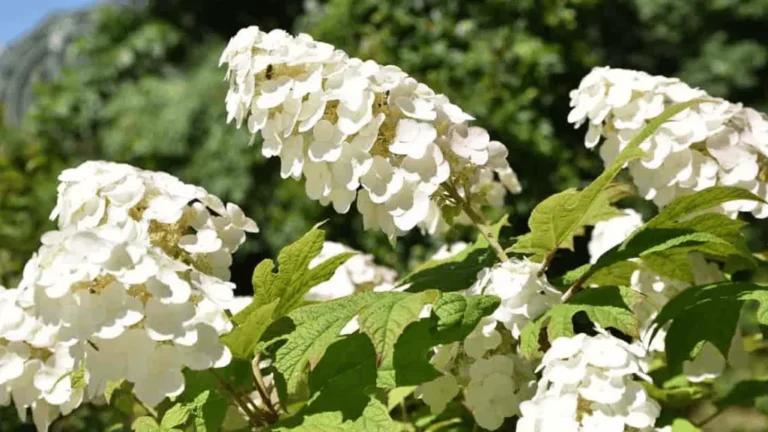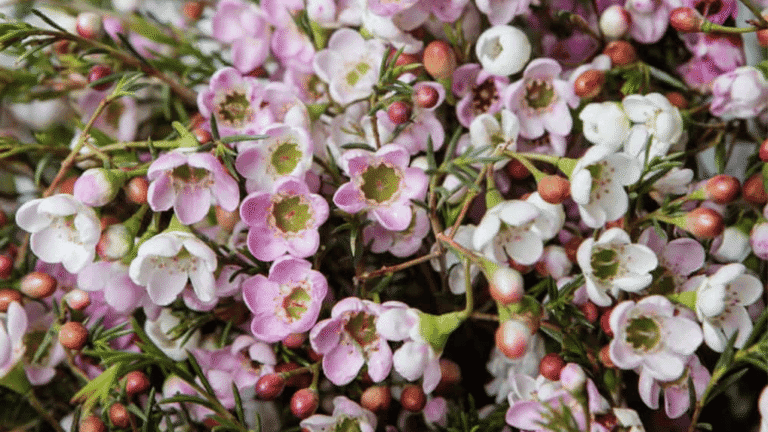Beautiful flowers gardenia Plants For Your homes

The Black Eyed Susan is a standout in North American wildflowers for its beauty and toughness. Its golden petals shine like the sun, drawing in gardeners who want vibrant blooms with little work. These plants fit well in both rustic and modern gardens, thanks to their ability to grow in many climates. In places like Fort Lauderdale, gardeners love using tropical gardening techniques, making the Black Eyed Susan a top choice.
These flowers grow well in zones 4 through 9 and make a big impact in gardens. To keep Black Eyed Susans thriving, they need lots of sunlight, good drainage, and regular watering at first. As they grow, they become tough and can survive with less water.
Key Takeaways
- Black Eyed Susan varieties amount to over 24 native species, flaunting a color spectrum from yellow to ruby red.
- Full sun exposure ensures vibrant blooms, requiring at least six hours of sunlight daily.
- Care for Black Eyed Susans involves a balance between initial regular watering and later appreciating their drought-tolerant nature.
- Propagate Black Eyed Susans via seeds or by dividing them to enhance garden diversity.
- Encourage biodiversity by integrating these flowers, which attract pollinators and birds, into your garden design.
- Mindful of common pests, gardeners can maintain healthy Black Eyed Susans through natural or gentle interventions.
- Embrace the self-seeding capacity of these plants for an ever-refreshing and evolving garden landscape.
Understanding the Black Eyed Susan Plant
The black eyed susan plant (scientific name Rudbeckia hirta) is famous for its hardy nature and bright, golden yellow flowers. These flowers catch the eye of every garden lover. They are a key part of American gardens for their beauty and help pollinators like bees and butterflies.
This plant grows 2-3 feet tall and has flowers that are 2 to 3 inches wide. They bloom from midsummer to early fall. It can grow in full sun or partial shade and likes soil that drains well and is a bit acidic to neutral.
| Feature | Description |
|---|---|
| Height | 2-3 feet |
| Bloom Size | 2-3 inches in diameter |
| Bloom Period | Midsummer to Early Fall |
| Sun Exposure | Full sun (6+ hours per day) to partial shade |
| Soil pH | 6.0 to 7.5 (Slightly acidic to neutral) |
| Soil Type | Well-drained |
| Native Range | East of the Rockies, naturalized west |
The black eyed susan plant is hardy and spreads easily through underground rhizomes. It can cover large areas with its vibrant yellow flowers. This makes it perfect for big gardens and wildflower meadows.
But, this plant can face pests like aphids and powdery mildew. With regular care, these problems are easy to handle. This keeps the plant a top choice for gardeners who want beauty and help for pollinators.
In conclusion, the black eyed susan flower is a favorite in gardens for good reasons. Its beauty, help for pollinators, and toughness make it a great addition to any garden.
An Overview of Black Eyed Susan Varieties
The enchanting world of Black Eyed Susans offers a variety of colors and forms. You can choose from perennial favorites or robust annual varieties. Knowing the difference between black eyed susan perennial and black eyed susan annual is key for a great garden performance.
Rudbeckia hirta is often grown as an annual or biennial. It’s known for its bright colors and is a great introduction to the genus for many gardeners. Rudbeckia fulgida ‘Goldsturm’, a perennial, is a favorite for its long bloom time and strong nature. It was even named the Perennial Plant Association’s Plant of the Year in 1999.
If you like height and drama in your garden, Rudbeckia laciniata ‘Herbsonne’ can grow up to 6 to 7 feet tall. It’s perfect for the back of a garden bed. For unique colors, try Rudbeckia hirta ‘Cherry Brandy’ with its deep red blooms, or ‘Irish Eyes’ with its bright yellow petals and green center.
| Variety | Height | Color | Type |
|---|---|---|---|
| ‘Goldsturm’ | 24-30 inches | Golden yellow | Perennial |
| ‘Cherry Brandy’ | Up to 24 inches | Crimson to cherry red | Biennial (annual care) |
| ‘Irish Eyes’ | 18-24 inches | Lemon-yellow and green | Perennial |
| ‘Herbsonne’ | 6-7 feet | Golden yellow | Perennial |
Learn more about these interesting varieties through Judith Irven’s insights on Black-Eyed Susans. She shares details from their native species to their strong garden performance.
Whether you prefer the vibrant colors of black eyed susan annual or the lasting beauty of black eyed susan perennial, these flowers can make your garden a colorful place. They attract bees and admirers alike.
Optimal Growing Conditions for Black Eyed Susans
To grow a beautiful garden of Black Eyed Susans, you need the right conditions. These plants love full sun and can grow in many soils. Whether you’re new to gardening or an expert in Black eyed susan landscaping, knowing the basics can help your garden look great.
Light Requirements for Lush Blooms
Black Eyed Susans need full sun to bloom well. They do best with 6 to 8 hours of direct sunlight each day. While they can get by with less sun, their blooms won’t be as bright and beautiful, which can affect your garden’s look.
Soil Preferences of Black Eyed Susan
Black Eyed Susans can grow in many soils, like loam, clay, or sand. But they grow best in rich, moist soil that drains well. Using a good gardening soil mix, like Miracle-Gro® Garden Soil for Flowers, helps keep the soil moist but drains excess water. This prevents waterlogging, which can lead to diseases and harm the plants.
Watering Techniques for Healthy Plants
Water Black Eyed Susans often when it’s dry, especially in hot weather. Once they’re mature, they can handle drought but grow better with regular watering. Water at the soil level to avoid getting the leaves wet, which can cause diseases like powdery mildew. Proper watering keeps your plants healthy and blooming well.
Following these tips will make your Black Eyed Susans more beautiful and strong. With the right light, soil, and water, your garden will be a colorful spot that everyone will admire.
Planting Black Eyed Susan Seeds and Seedlings
For gardeners and landscapers, planting black eyed susans can brighten up your space. Starting with black eyed susan seeds or transplanting perennials can be rewarding. Knowing what these plants need is key to their success and health.
Starting with seeds, black eyed susans are easy to grow. Plant seeds 1mm deep in soil with organic matter. Keep the soil at 20-22°C for 7-14 days for germination. Once seedlings are strong, move them outside, about 18 inches apart, to prevent crowding.
When transplanting perennials, pick the right time and conditions. Wait until after the last frost and the soil is warm. This helps perennials settle and start growing well from the start.
After planting, taking good care of black eyed susans is important. They love full sun but can handle some shade. But, less sun might mean fewer flowers.
Water them weekly to keep the soil moist. This is crucial to avoid drought stress, especially when it’s dry.
| Aspect | Recommendation |
|---|---|
| Soil Type | Loam, enriched with organic matter |
| Spacing | 18 inches apart to foster self-seeding |
| Light Exposure | Full sunlight preferred, tolerates partial shade |
| Watering Frequency | Weekly to maintain damp soil conditions |
| Special Care | Deadheading to extend blooming period |
Whether you’re planting black eyed susan seeds or transplanting perennials, these plants will give you beautiful yellow flowers from summer to early fall. With the right soil, space, and water, black eyed susans will be a lasting part of your garden.
Maintenance and Care for Black Eyed Susans
Proper care boosts the growth and bloom quality of Black Eyed Susans. This guide covers how to propagate, water, and feed these flowers. Knowing these tips helps your Black Eyed Susans thrive, especially in dry areas.
Regular Watering Schedule
Getting the watering right is key for Black Eyed Susans. Start with frequent watering to help them get established. But, as they grow, they need less water to use their drought-tolerant trait. It’s important to find the right balance to avoid root rot from too much water.
In dry seasons, you might need to water them extra to keep them healthy.
The Role of Fertilizers in Flower Care
Black Eyed Susans don’t need much care, but a bit of fertilizer helps. Feed them every four to six weeks when they’re growing well. This makes them bloom more and fight off pests and diseases. But, too much fertilizer can harm the flowers and pollute the environment.
Understanding Propagation Techniques
Propagating Black Eyed Susans is a great way to grow more of these flowers. You can start them from seeds, which take about two to three weeks to germinate. Or, you can divide mature plants in spring or fall to keep them healthy and spread out.
Here’s a table that shows the best conditions for growing Black Eyed Susans:
| Condition | Requirement |
|---|---|
| Temperature | 17-20 °C |
| Sunlight | Sunny but airy location |
| Soil Type | Humus-rich soil |
| Plant Spacing | 50cm apart |
| Watering | Balanced; avoid over/underwatering |
| Fertilization Frequency | Every 4-6 weeks during growing season |
| Propagation Method | Seeds or division of plants |
Following these guidelines helps your Black Eyed Susans stay healthy and look great. They become a bright part of any garden.
Seasonal Tips for Black Eyed Susan Perennial Care
For a lively and lasting garden, it’s key to give Black eyed susan flower care the right seasonal attention. Knowing what each season needs is vital for keeping these flowers healthy and bright. This part will share important tips for spring and fall to help Black Eyed Susans grow strong.
Spring Planting for Early Blooms
Spring is the best time to plant Black Eyed Susans for early flowers. Wait until the frost risk goes away before you start. If you want to add ‘Goldsturm’ or ‘Prairie Sun’ to your garden, spring is the way to go. These types grow fast, reaching full beauty in their first year with early planting.
Make sure the soil is well-aired and moist but not too wet.
Fall Care for Perennial Varieties
Fall is important for getting Black Eyed Susans ready for winter. After they stop blooming, cut off dead flowers to encourage more blooms. For tall plants like ‘Herbstsonne’, which can be up to 7 feet tall, tie them up to protect them from the wind. This season is also great for dividing mature plants to help them grow and refresh.
Here’s a quick guide to the best practices and top Black Eyed Susan types for each season:
| Variety | Height | Bloom Size | Seasonal Activity |
|---|---|---|---|
| Goldsturm | 2 feet | 3 inches | Spring/Summer Blooming |
| Prairie Sun | 3 feet | 5 inches | Spring/Summer Blooming |
| Herbstsonne | 7 feet | 4 inches | Fall Maintenance |
| Little Goldstar | 1.5 feet | 3 inches | Container Gardening |
Using these seasonal planting tips and careful fall care will make sure your perennial flowers like Black Eyed Susans flourish. They’ll brighten your garden year after year.
Landscape Design Ideas with Black Eyed Susan
The Black-eyed Susan vine and annuals are key in gardening for their bright, cheerful flowers. They’re crucial in making landscape design pop. These plants turn gardens into lively spots that attract wildlife and wow visitors. Here are ways to use Black-eyed Susan in your landscape.
- Creating Colorful Borders: Choose the vine or the bushy annuals for borders. Plant them along fences, walkways, or as edging. Leave about 18 inches between each plant for growth.
- Background Planting: Black-eyed Susans work great as background plants. Plant them behind shorter plants. They grow from 12 to 36 inches tall, perfect for adding depth to your garden.
- Garden Accents: Highlight garden statues, fountains, or sitting areas with Black-eyed Susan plants. Their bright flowers make these features stand out.
- Wildlife Gardens: These plants attract butterflies, bees, and birds. Adding them to your garden supports local wildlife and makes your garden lively.
From June to October, Black-eyed Susan keeps your garden colorful for months. Using these plants in your design adds beauty and fun to your landscape.
Planting Black-eyed Susan also helps with conservation. It provides food and shelter for pollinators and birds in the cold months. This is when resources are scarce.
Adding Black-eyed Susan to your garden boosts its look and supports local wildlife. Whether along paths, framing beds, or in large areas, this plant is great for creating beautiful, sustainable landscapes.
Attracting Wildlife with Black Eyed Susan Flowers
The Black eyed susan perennial is known for its bright flowers and its ability to draw in many animals. These tough plants grow in zones 3-9 and are a big draw for pollinators. They are a key part of any bird-friendly gardens.
Black-eyed Susans are not just pretty to look at. They also help local wildlife and connect nature with our daily lives. By adding these perennials to your garden, you’re helping local biodiversity and enhancing nature’s connection to us.
Pollinators and Black Eyed Susan Synergy
Black-eyed Susans bloom late in the summer. This makes them very important for pollinators like butterflies and bees. They look for food before winter comes. The ‘Goldsturm’, ‘Indian Summer’, and ‘Denver Daisy’ types have big, bright flowers full of nectar. This makes your garden a lively place.
Birds and the Black Eyed Susan Seed Heads
When the flowers stop blooming, the Black-eyed Susan’s seed heads become important for birds. These seed heads are food for birds in autumn. They are a big part of making bird-friendly gardens. Birds help with attracting wildlife and control pests. So, Black-eyed Susans are great for your garden in two ways.
| Black-eyed Susan Variety | Flower Description | Main Attraction |
|---|---|---|
| Goldsturm | Traditional golden blooms | Popular with bees and butterflies |
| Indian Summer | Large golden-yellow flowers | Ideal for larger pollinators |
| Denver Daisy | Golden-yellow flowers with a rusty-red center | Attracts a variety of pollinators |
| Cherokee Sunset | Semidouble flowers in warm shades | Provides extended sustenance for birds |
By choosing these varieties, gardeners make their gardens more beautiful and help the environment. They attract wildlife that keeps nature healthy.
Dealing with Common Black Eyed Susan Pests and Problems
Black-eyed Susans are known for their bright look and tough nature. Yet, they face many garden problems, like Black eyed susan pests like aphids, spider mites, and fungal issues. It’s key to tackle these issues to keep these flowers healthy and looking good.
Aphids and spider mites are pests that harm Black-eyed Susans. They eat the plant’s sap, making leaves weak and discolored. You can fight these pests with insecticidal soaps or neem oil. Encouraging ladybugs and lacewings can also help keep pests away for good.
Fungal issues, like leaf spots and mildews, are common too. Good air flow and avoiding overhead watering can stop these diseases. If a fungus is already there, you might need fungicides. Here’s a list of fungicides for Black-eyed Susan diseases in Connecticut:
| Disease | Fungicide | Active Ingredient |
|---|---|---|
| Downy Mildew | Mancozeb | Mancozeb |
| Leaf Spots | Thiophanate-methyl, Sulfur | Thiophanate-methyl, Sulfur |
| Powdery Mildew | Potassium Bicarbonate, Ultra-fine Oil, Sulfur | Ultra-fine Oil, Sulfur, Triadimefon, Thiophanate-methyl |
| Rust | Mancozeb, Sulfur | Mancozeb, Sulfur |
Checking your Black-eyed Susans often for problems is key to their health. Spotting pests and diseases early lets you act fast and effectively. This can prevent big garden problems.
Remember, good gardening means regular care and watching over your plants. Dealing with pests and diseases quickly and well keeps your Black-eyed Susans looking great in your garden.
The Annual vs. Perennial Black Eyed Susan Debate
Choosing between the black eyed susan annual and black eyed susan perennial plants depends on what gardeners need. They look for different things like color, how long the flowers last, and how long the plants last in the garden. Each type has its own benefits and fits into gardens in different ways.
Distinct Characteristics of Each Type
Black eyed susan annuals, like Rudbeckia hirta ‘Indian Summer’, have big, bright flowers that bloom from late spring to the first frost. They’re great for gardeners who want a quick splash of color. On the other hand, black eyed susan perennials come back every year with strong flowers and can handle cold weather and less water.
Perennials like Black-eyed Susan ‘Goldsturm’ make gardens last longer by building a strong root system. This helps them survive the cold and fight erosion. They also keep the garden looking good all year with their leaves.
Seasonal Behaviors and Lifespan Comparisons
Annual Black-eyed Susans finish their life cycle in one season, giving a full show of flowers before the frost. They need to be replanted every year, which might not be what everyone wants for a easy garden. Perennials, however, come back every spring from the same roots, so they don’t need to be planted every year. This means they get better and more flowers over time.
When it comes to seed propagation, both types are good at it. Annuals need to be seeded every year, while perennials spread out and can be encouraged to grow more by dividing or letting them spread naturally, unless you cover the ground with mulch.
| Characteristic | Annual Black-eyed Susan | Perennial Black-eyed Susan |
|---|---|---|
| Bloom Duration | One Season | Yearly (Recurring) |
| Maintenance Needs | Higher (Replanting Required) | Lower (Comes back each year) |
| Drought Resistance | Lower | Higher |
| Root System | Shallow | Deep and Robust |
| Best For | Immediate Impact and Color | Long-term Garden Design |
In the end, whether to pick a black eyed susan annual or black eyed susan perennial depends on the garden and what the gardener wants. Both add special colors and textures to the garden, making it more lively and beautiful.
The Vibrant Black Eyed Susan in Folklore and Culture
The Black Eyed Susan is a beloved flower in American gardens. It’s known for its bright yellow petals and deep roots in black eyed susan folklore and cultural significance. This wildflower comes from North America and has become a symbol of justice and motivation in many communities.
In Native American herbal medicine, the Black Eyed Susan was a key plant. Its flowers were not just pretty but also had healing properties. People used different parts of the plant to treat various illnesses, from colds to arthritis.
- Historical Significance: Adopted by early European settlers from Native practices.
- Medicinal Uses: Teas, tinctures, and poultices were common forms.
- Floral Significance: Emblem of resilience and beauty in American culture.
The flower’s ability to grow in different shows its strength in folklore. It can grow in zones 3 to 9, showing its toughness and flexibility. This matches the stories it tells in culture.
| Characteristic | Description |
|---|---|
| Height | Typically reaches 2-3 feet |
| Blooming Period | Mid-summer to early fall |
| Symbolic Meaning | Justice, motivation, resilience |
| Cultural Role | Featured in Native American medicinal practices and American folklore |
The Black Eyed Susan’s charm and cultural significance keep it captivating. It’s more than a flower; it’s a symbol deeply rooted in American culture.
Advantages of Black Eyed Susan in Eco-Friendly Gardening
Black Eyed Susans (Rudbeckia) are key in eco-friendly gardening. They show what it means to care for the planet. With their bright, daisy-like looks and tough nature, they bring many benefits. They are perfect for gardeners who want to make spaces that are lovely and good for nature.
Drought Resistance and Sustainability
Black Eyed Susans stand out for their drought resistance. They do well in many sun and water conditions. This makes them great for eco-friendly gardening, as they need less water and help save it. They also need little care after planting, surviving mainly on rain.
These plants are great for sustainable gardening. They show how to take care of your garden without harming the environment. For more info on protecting your garden and privacy, check out the privacy policy from trusted sources.
Contribution to Biodiversity
Black Eyed Susans are more than pretty. They help with biodiversity. These plants draw in bees, butterflies, and birds that are vital for plant growth. These visitors help your garden and the wider ecosystem by spreading pollen and seeds.
| Feature | Benefits |
|---|---|
| Eco-Friendly | Reduces water usage, low maintenance |
| Attracts Wildlife | Supports biodiversity, enhances garden health |
| Cultural Significance | State flower of Maryland, symbolizes justice |
| Medicinal Use | Historically used for teas and medicinal baths |
By adding Black Eyed Susans to your garden, you do more than just make it look good. You help the environment too. This makes these flowers a smart choice for anyone who cares about the planet.
Conclusion
The Black-eyed Susan is more than just a pretty flower in vibrant landscaping. It’s a tough plant that stands out with its beauty. ‘Goldsturm’ and ‘Little Goldstar’ are top picks for their looks and size. ‘Irish Eyes’ adds a special touch with its green centers.
This flower blooms from late spring to fall, making gardens look great all season. It also helps local ecosystems by attracting butterflies, birds, and bees. This makes it a great choice for eco-friendly gardens.
In places like Colorado, where saving water is key, the Black-eyed Susan is perfect. It doesn’t need much water or care, fitting the modern gardener’s goals. Plus, it’s strong against pests and diseases, making it a reliable choice for any garden.
Adding a Black-eyed Susan to your garden is a smart move for both beauty and the environment. It’s a plant that brings together looks, usefulness, and eco-friendliness. When deciding how to manage it, remember it’s a valuable part of nature and our gardens.






